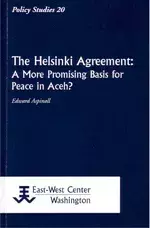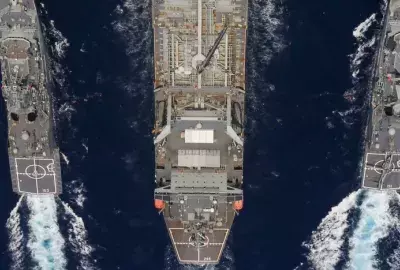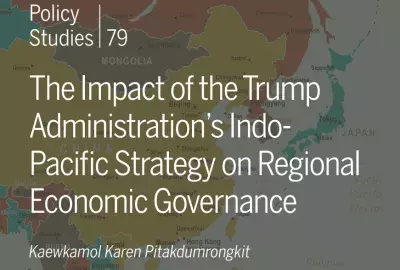Error message

On August 15, 2005, in Helsinki, Finland, representatives of the Indonesian government and the Free Aceh Movement (Gerakan Aceh Merdeka, GAM) signed a Memorandum of Understanding (MoU) aiming to end the conflict in Aceh, Indonesia’s westernmost province and the site of an armed insurgency that has operated at varying levels of intensity since 1976.
The immediate background to the peace talks when they began in January 2005, did not seem propitious. There had already been two failed peace accords in recent years. In 2000, a "Humanitarian Pause" had generated only a temporary halt to the violence, while a December 2002 "Cessation of Hostilities Agreement" (COHA) ended when the Indonesian government declared a "military emergency" in Aceh in May 2003 and announced that it wanted to destroy GAM once and for all. Aceh seemed destined to endure many more years of armed conflict.
The next two years, however, saw important changes on both sides that paved the way for a return to talks. The government’s military offensive took a major toll on GAM and gave rise to battle fatigue among its supporters. Some GAM leaders began to feel that their existing strategy of armed struggle for independence had reached an impasse. Meanwhile, a presidential election in late 2004 handed control of the Indonesian government to two men, President Susilo Bambang Yudhoyono and Vice President Jusuf Kalla, who were personally committed to negotiations as a means of ending conflict. Early steps toward reopening talks occurred in late 2004 and were accelerated by the impact of the devastating Indian Ocean tsunami of December 26, which caused great loss of life in Aceh and opened the province to a substantial international humanitarian presence.
After five rounds of tough bargaining between January and July, the two sides eventually agreed on the Helsinki MoU. This agreement has a much greater chance of success than the previous peace accords. It is a fundamentally different kind of agreement. The Humanitarian Pause and COHA both called for ceasefires and demilitarization leading to open-ended dialogue on the political status of Aceh. Both sides remained far apart on the core issue of whether Aceh should become independent or remain part of Indonesia. In such circumstances, it proved impossible for the two sides to develop confidence in one another. In particular, military and government officials believed GAM was using the peace to strengthen its separatist struggle.
The new mediator in 2005, the Crisis Management Initiative (CMI) of former president of Finland Martti Ahtisaari, reversed the sequence for peace. Using the formula that "nothing is agreed until everything is agreed," he required the two parties to agree on the broad outlines of a political formula before a ceasefire and related security arrangements would be put into effect. This placed great pressure on them to modify their positions.
An agreement became possible after GAM announced in February that it was willing to set aside its goal of independence and accept a solution based on "self-government" for Aceh within the Indonesian state. This historic decision allowed further progress, prompting the government negotiators to give key concessions (notably, allowing local political parties in Aceh) and enabling a deal to be struck. Unlike the previous accords, the MoU includes the outline of a comprehensive peace settlement. It does not deal only with security matters but also sets out in broad terms a new political relationship between Aceh and the Indonesian state (to be embodied in a new Law on the Governing of Aceh). The MoU also includes provisions concerning political participation, human rights, the rule of law, and economic matters as well as measures for the disarmament of GAM and its members’ reintegration into society. Also distinguishing it from previous accords are much more robust monitoring provisions, with an Aceh Monitoring Mission sponsored by the European Union and participating countries from ASEAN (Association of Southeast Asian Nations). With the basis of a political solution in place, it should be easier for the two sides to develop trust in each other’s intentions than in the previous failed peace attempts.
This does not mean that the peace is secure. On the contrary, there are several major threats to it. First, the political agreement embodied in the MoU may in fact be much narrower than a cursory reading would suggest. Many of the key provisions are ambiguous and vaguely worded and will be interpreted very differently by the two sides. GAM members view provisions on Aceh’s government as being wide in scope and as giving Aceh almost unfettered powers to determine its own affairs. On the other side, some in the government view the MoU as providing at best for only minimal extensions of arrangements already provided in a 2001 Special Autonomy Law.
Second, there are potential spoilers on both sides who could set out to undermine or even sabotage the agreement. For example, politicians in Indonesia’s national parliament have fiercely criticized the MoU, yet they will be required to pass the new Law on the Governing of Aceh. Major backsliding during this process could undermine GAM’s commitment to the deal. Elements in the Indonesian military (TNI) and their allies remain highly suspicious of GAM and retain considerable capacity to undermine the agreement in the field through violent means. For their part, GAM leaders have not yet stated that their acceptance of Aceh’s incorporation into Indonesia is unconditional and enduring, and their failure to do so might exacerbate suspicion among their erstwhile foes.
Third, even if the crucial first six to twelve months of the peace accord are navigated successfully, there are still dangers that could render it ineffective over the long term. Future national legislation might gradually erode key features of the accord, while corruption and poor government capacity might prevent the local community from benefitiRepresentatives of the Indonesian government and the Free Aceh Movement signed a MoU aiming to end the conflict in Aceh, the site of an armed insurgency since 1976.ng from the anticipated peace dividend. Such failings could reawaken deeply held beliefs in Aceh that Jakarta cannot be trusted and set the scene for an eventual reemergence of the conflict.
None of these problems appears insurmountable. For instance, although the potential for spoiling is great, there are few potential "total spoilers" who are determined to destroy the peace agreement come what may. Rather, the main actors’ attitudes to the peace deal are above all contingent upon how they interpret their opponents’ intentions and strategies. Although the dangers of breakdown of the Helsinki agreement are real, the problems are potentially manageable, provided that the key players cultivate the good will they developed during the negotiations and so long as astute strategies are designed and appropriate incentives offered to potential spoilers. There are reasons for optimism. No matter what the immediate future has in store, the Helsinki MoU provides the sort of solid framework for peace that has long eluded Aceh.

On August 15, 2005, in Helsinki, Finland, representatives of the Indonesian government and the Free Aceh Movement (Gerakan Aceh Merdeka, GAM) signed a Memorandum of Understanding (MoU) aiming to end the conflict in Aceh, Indonesia’s westernmost province and the site of an armed insurgency that has operated at varying levels of intensity since 1976.
The immediate background to the peace talks when they began in January 2005, did not seem propitious. There had already been two failed peace accords in recent years. In 2000, a "Humanitarian Pause" had generated only a temporary halt to the violence, while a December 2002 "Cessation of Hostilities Agreement" (COHA) ended when the Indonesian government declared a "military emergency" in Aceh in May 2003 and announced that it wanted to destroy GAM once and for all. Aceh seemed destined to endure many more years of armed conflict.
The next two years, however, saw important changes on both sides that paved the way for a return to talks. The government’s military offensive took a major toll on GAM and gave rise to battle fatigue among its supporters. Some GAM leaders began to feel that their existing strategy of armed struggle for independence had reached an impasse. Meanwhile, a presidential election in late 2004 handed control of the Indonesian government to two men, President Susilo Bambang Yudhoyono and Vice President Jusuf Kalla, who were personally committed to negotiations as a means of ending conflict. Early steps toward reopening talks occurred in late 2004 and were accelerated by the impact of the devastating Indian Ocean tsunami of December 26, which caused great loss of life in Aceh and opened the province to a substantial international humanitarian presence.
After five rounds of tough bargaining between January and July, the two sides eventually agreed on the Helsinki MoU. This agreement has a much greater chance of success than the previous peace accords. It is a fundamentally different kind of agreement. The Humanitarian Pause and COHA both called for ceasefires and demilitarization leading to open-ended dialogue on the political status of Aceh. Both sides remained far apart on the core issue of whether Aceh should become independent or remain part of Indonesia. In such circumstances, it proved impossible for the two sides to develop confidence in one another. In particular, military and government officials believed GAM was using the peace to strengthen its separatist struggle.
The new mediator in 2005, the Crisis Management Initiative (CMI) of former president of Finland Martti Ahtisaari, reversed the sequence for peace. Using the formula that "nothing is agreed until everything is agreed," he required the two parties to agree on the broad outlines of a political formula before a ceasefire and related security arrangements would be put into effect. This placed great pressure on them to modify their positions.
An agreement became possible after GAM announced in February that it was willing to set aside its goal of independence and accept a solution based on "self-government" for Aceh within the Indonesian state. This historic decision allowed further progress, prompting the government negotiators to give key concessions (notably, allowing local political parties in Aceh) and enabling a deal to be struck. Unlike the previous accords, the MoU includes the outline of a comprehensive peace settlement. It does not deal only with security matters but also sets out in broad terms a new political relationship between Aceh and the Indonesian state (to be embodied in a new Law on the Governing of Aceh). The MoU also includes provisions concerning political participation, human rights, the rule of law, and economic matters as well as measures for the disarmament of GAM and its members’ reintegration into society. Also distinguishing it from previous accords are much more robust monitoring provisions, with an Aceh Monitoring Mission sponsored by the European Union and participating countries from ASEAN (Association of Southeast Asian Nations). With the basis of a political solution in place, it should be easier for the two sides to develop trust in each other’s intentions than in the previous failed peace attempts.
This does not mean that the peace is secure. On the contrary, there are several major threats to it. First, the political agreement embodied in the MoU may in fact be much narrower than a cursory reading would suggest. Many of the key provisions are ambiguous and vaguely worded and will be interpreted very differently by the two sides. GAM members view provisions on Aceh’s government as being wide in scope and as giving Aceh almost unfettered powers to determine its own affairs. On the other side, some in the government view the MoU as providing at best for only minimal extensions of arrangements already provided in a 2001 Special Autonomy Law.
Second, there are potential spoilers on both sides who could set out to undermine or even sabotage the agreement. For example, politicians in Indonesia’s national parliament have fiercely criticized the MoU, yet they will be required to pass the new Law on the Governing of Aceh. Major backsliding during this process could undermine GAM’s commitment to the deal. Elements in the Indonesian military (TNI) and their allies remain highly suspicious of GAM and retain considerable capacity to undermine the agreement in the field through violent means. For their part, GAM leaders have not yet stated that their acceptance of Aceh’s incorporation into Indonesia is unconditional and enduring, and their failure to do so might exacerbate suspicion among their erstwhile foes.
Third, even if the crucial first six to twelve months of the peace accord are navigated successfully, there are still dangers that could render it ineffective over the long term. Future national legislation might gradually erode key features of the accord, while corruption and poor government capacity might prevent the local community from benefitiRepresentatives of the Indonesian government and the Free Aceh Movement signed a MoU aiming to end the conflict in Aceh, the site of an armed insurgency since 1976.ng from the anticipated peace dividend. Such failings could reawaken deeply held beliefs in Aceh that Jakarta cannot be trusted and set the scene for an eventual reemergence of the conflict.
None of these problems appears insurmountable. For instance, although the potential for spoiling is great, there are few potential "total spoilers" who are determined to destroy the peace agreement come what may. Rather, the main actors’ attitudes to the peace deal are above all contingent upon how they interpret their opponents’ intentions and strategies. Although the dangers of breakdown of the Helsinki agreement are real, the problems are potentially manageable, provided that the key players cultivate the good will they developed during the negotiations and so long as astute strategies are designed and appropriate incentives offered to potential spoilers. There are reasons for optimism. No matter what the immediate future has in store, the Helsinki MoU provides the sort of solid framework for peace that has long eluded Aceh.








